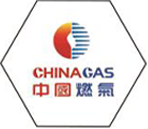
Oct . 09, 2024 09:58
Back to list
Understanding Gas Safety Relief Valve Functions and Importance in Safety Systems
Gas Safety Relief Valves A Crucial Component for Safe Operations
Gas safety relief valves play a vital role in ensuring the safe operation of gas systems across various industries. These devices are designed to protect equipment and personnel from overpressure conditions that can arise during normal operations. Understanding their function, design, and maintenance is essential for anyone working in or around gas systems.
At its core, a gas safety relief valve is a mechanical device that opens automatically to release excess pressure from a gas system. This is crucial because gas systems can be subject to sudden pressure spikes due to changes in temperature, system malfunctions, or operational mistakes. If unchecked, these pressure surges can lead to catastrophic failures, resulting in damage to equipment, potential explosions, and even loss of life. This is where the relief valve comes into play.
The design of gas safety relief valves varies according to their specific applications. However, they typically consist of a spring-loaded mechanism that holds the valve closed under normal pressure conditions. When the pressure exceeds a predetermined level, the valve opens, allowing gas to escape until the pressure is reduced to a safe level. Once the pressure normalizes, the valve closes automatically, ensuring continuous safe operations.
gas safety relief valve

Proper selection and installation of these valves are essential. Factors such as the type of gas, operating pressure, and temperature must be considered when choosing a relief valve. Additionally, the installation must adhere to industry standards and local regulations to guarantee safety and compliance.
Regular maintenance and testing of gas safety relief valves are equally important. These valves should be inspected periodically to ensure they are functioning correctly. Over time, components can wear out or become damaged, leading to potential failures. Routine tests can include pressure calibration and function checks to confirm that the valve operates correctly under specified conditions.
Training is another critical aspect of ensuring safety around gas systems. Personnel should be well-informed about the operation and maintenance of gas safety relief valves. Awareness of the signs of valve malfunction, such as unusual noises or pressure fluctuations, can help in taking prompt action to mitigate risks.
In conclusion, gas safety relief valves are indispensable for maintaining the safety and integrity of gas systems. By understanding their role, ensuring proper installation and maintenance, and providing necessary training for personnel, industries can significantly reduce the risks associated with gas operations. As safety remains a paramount concern, prioritizing the functionality of these valves will contribute to a safer working environment.
Next:
Latest news
-
Safety Valve Spring-Loaded Design Overpressure ProtectionNewsJul.25,2025
-
Precision Voltage Regulator AC5 Accuracy Grade PerformanceNewsJul.25,2025
-
Natural Gas Pressure Regulating Skid Industrial Pipeline ApplicationsNewsJul.25,2025
-
Natural Gas Filter Stainless Steel Mesh Element DesignNewsJul.25,2025
-
Gas Pressure Regulator Valve Direct-Acting Spring-Loaded DesignNewsJul.25,2025
-
Decompression Equipment Multi-Stage Heat Exchange System DesignNewsJul.25,2025

